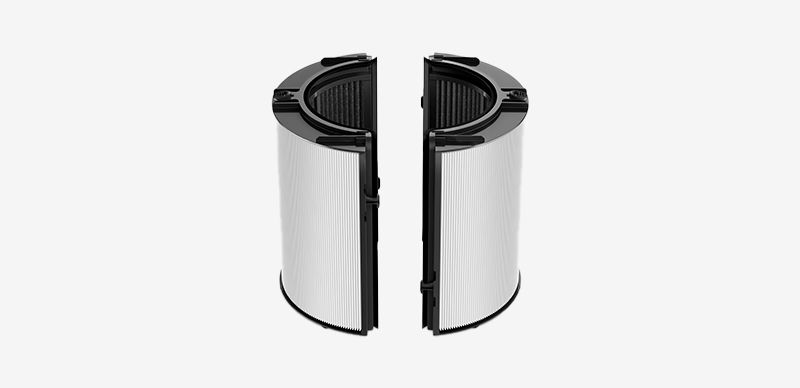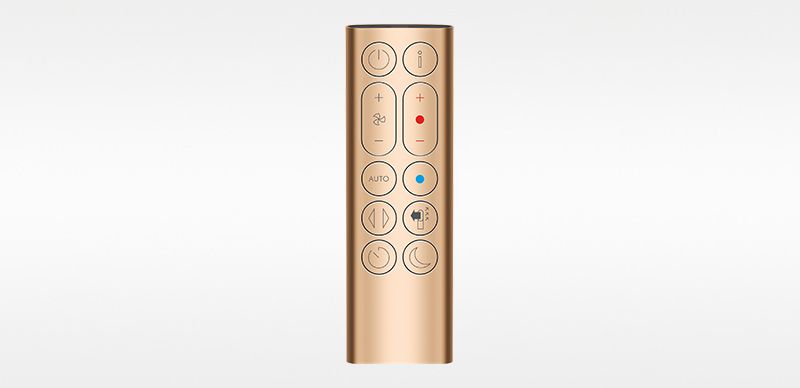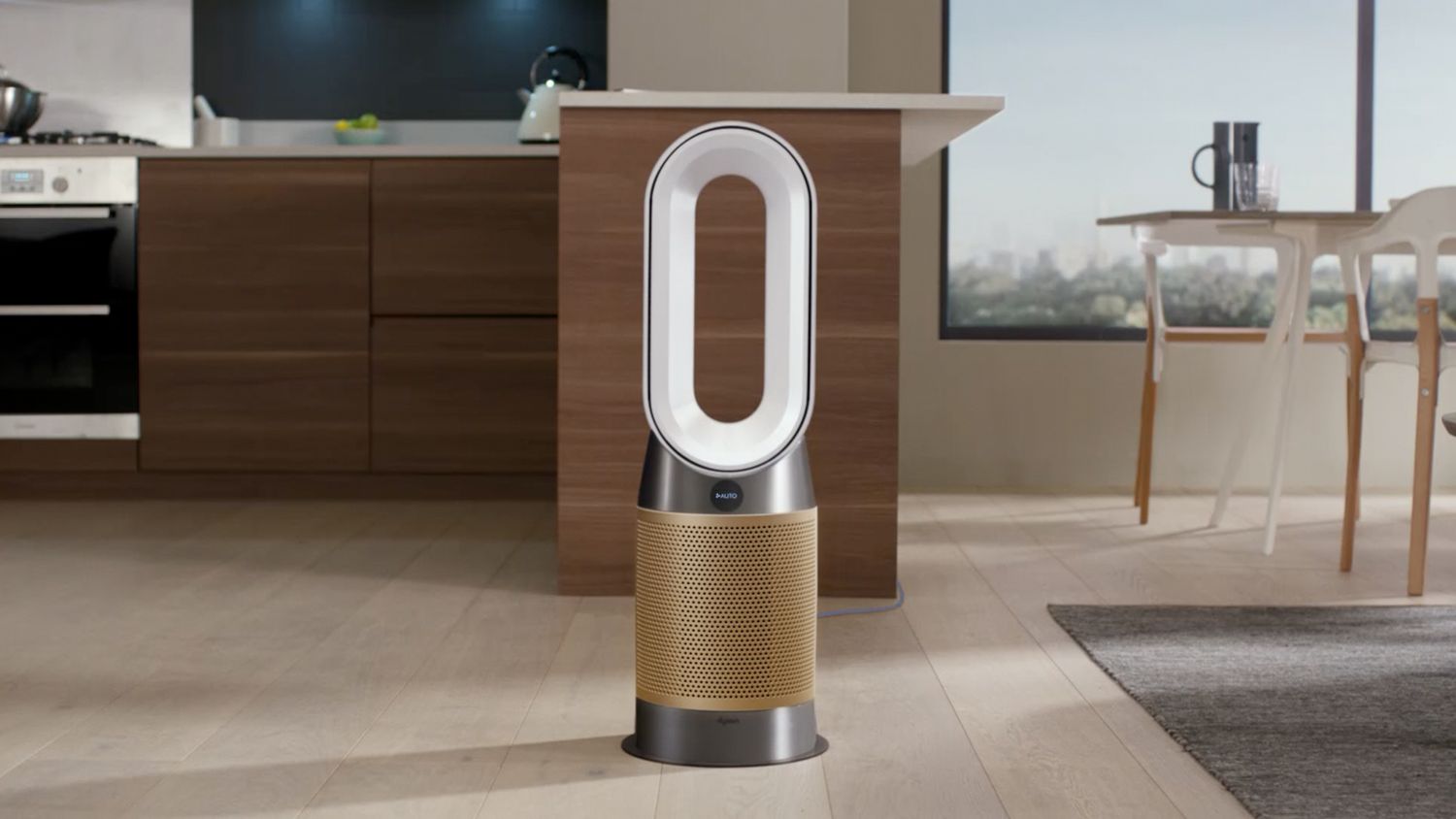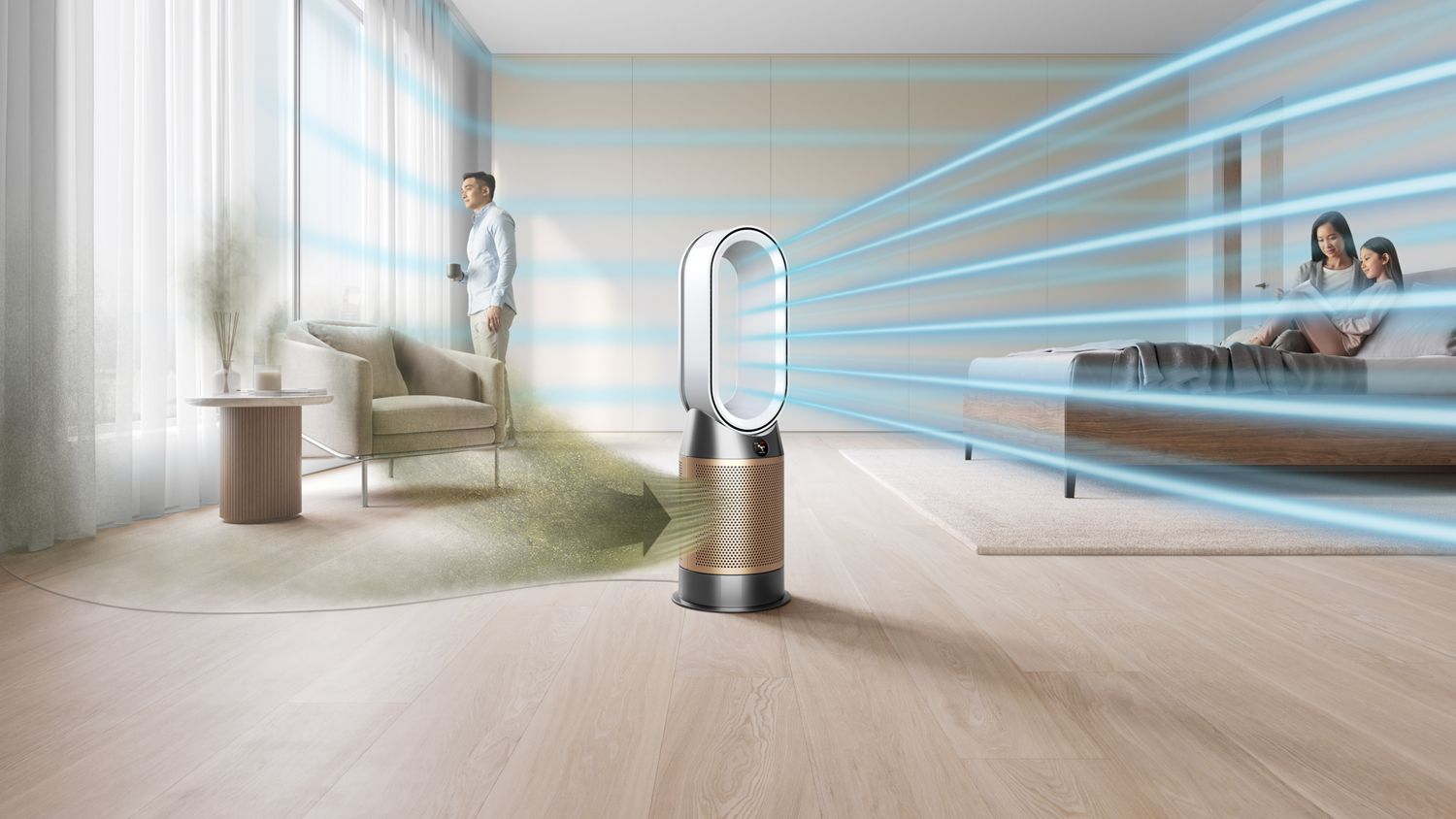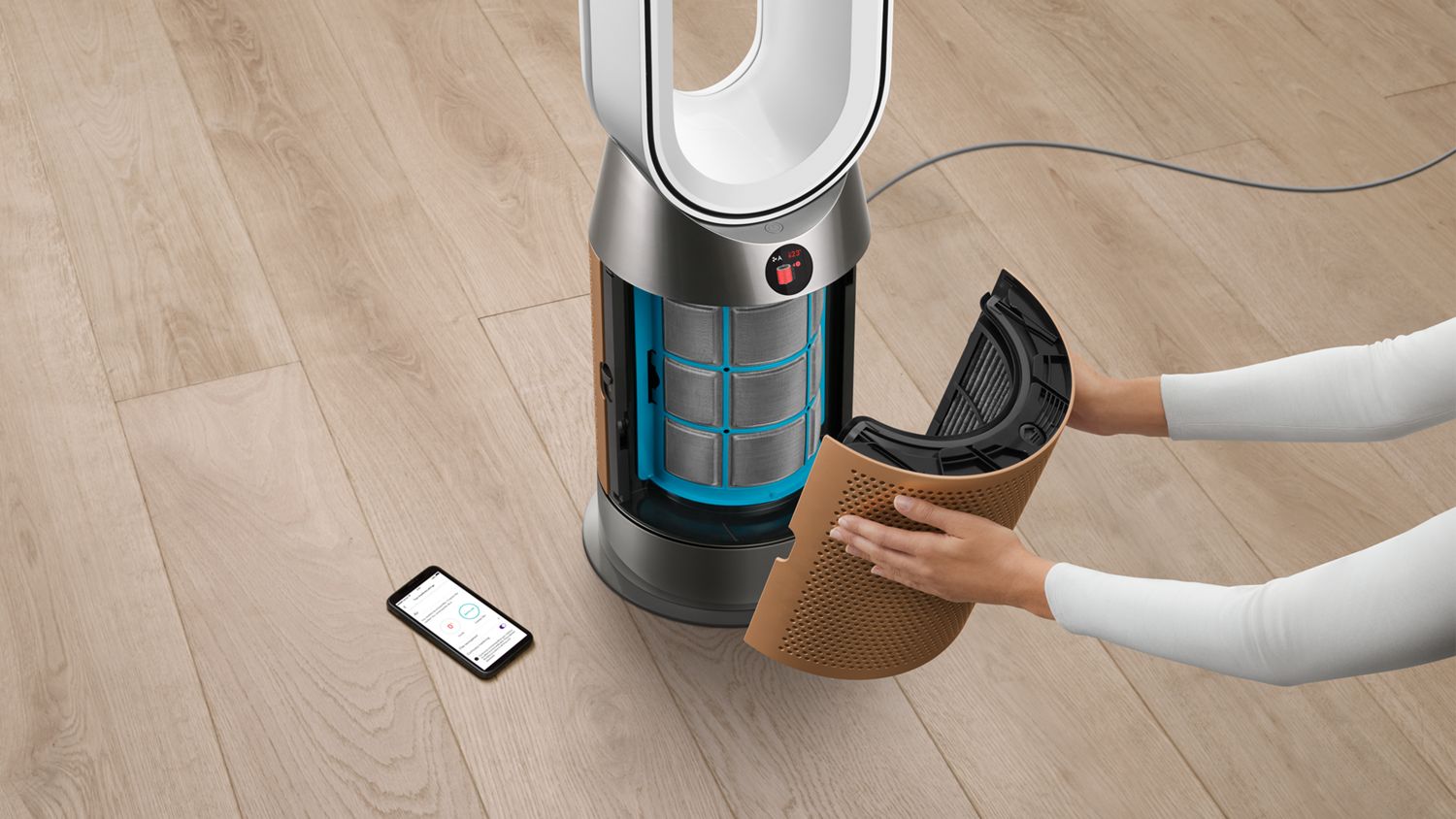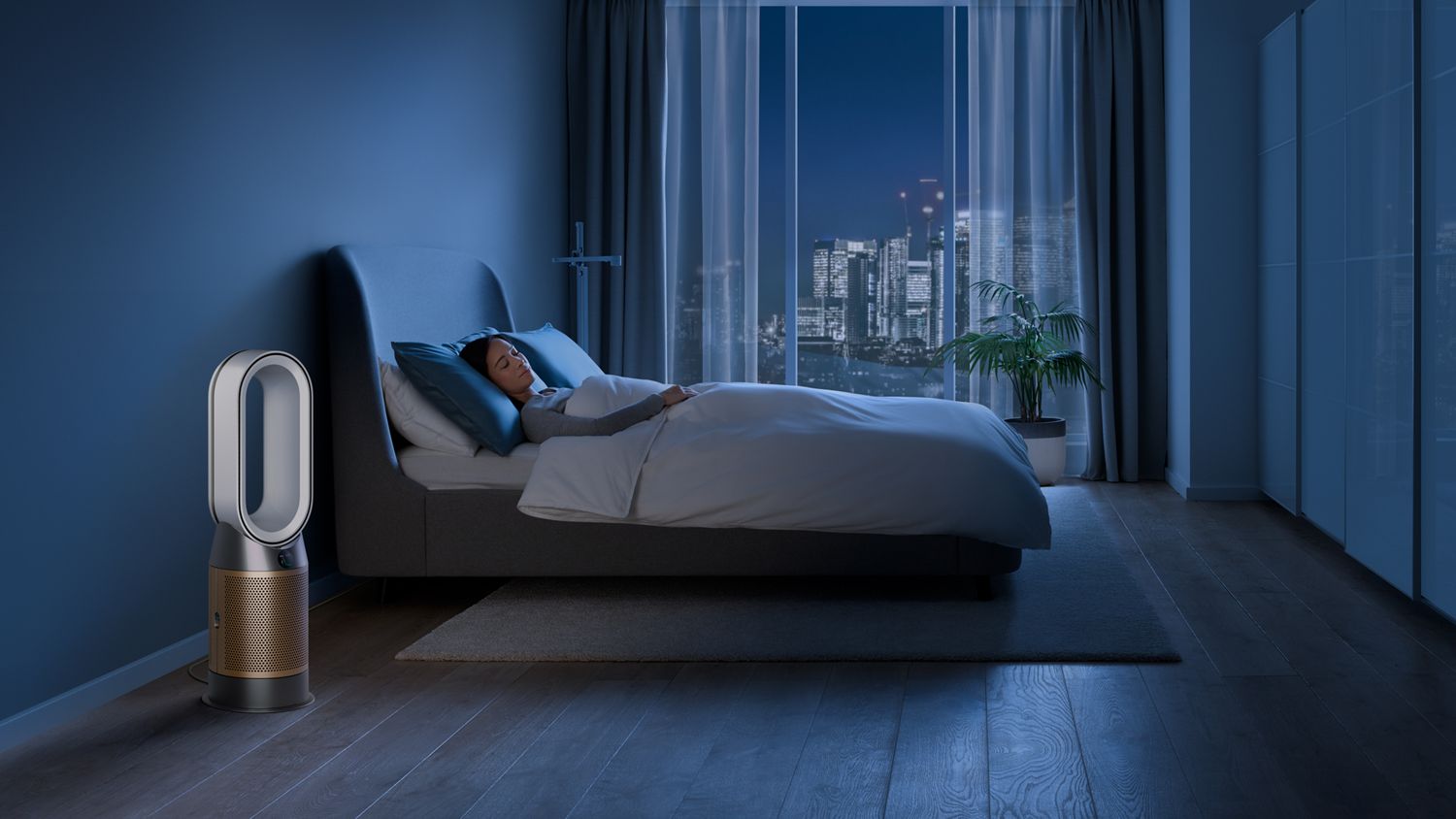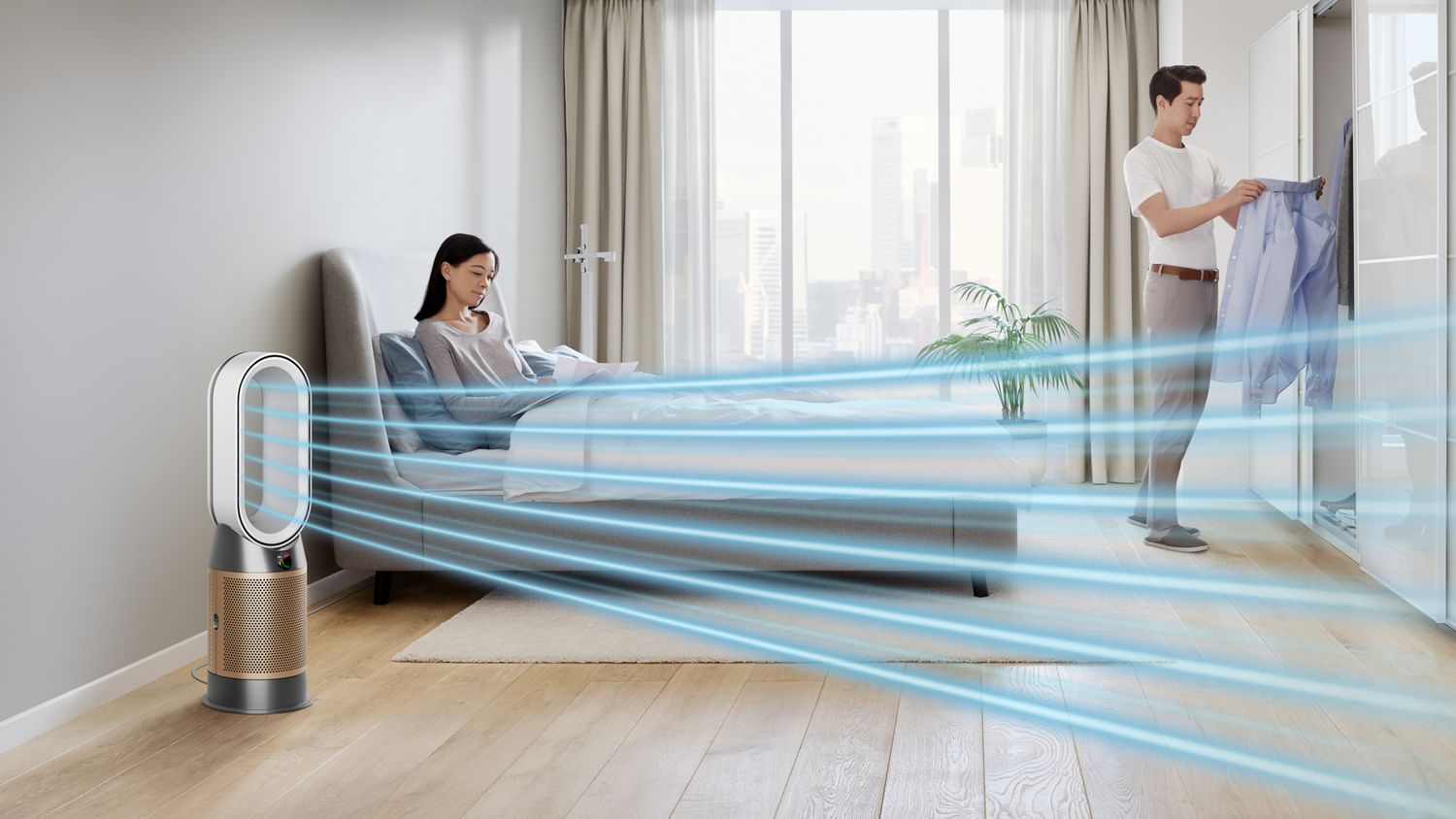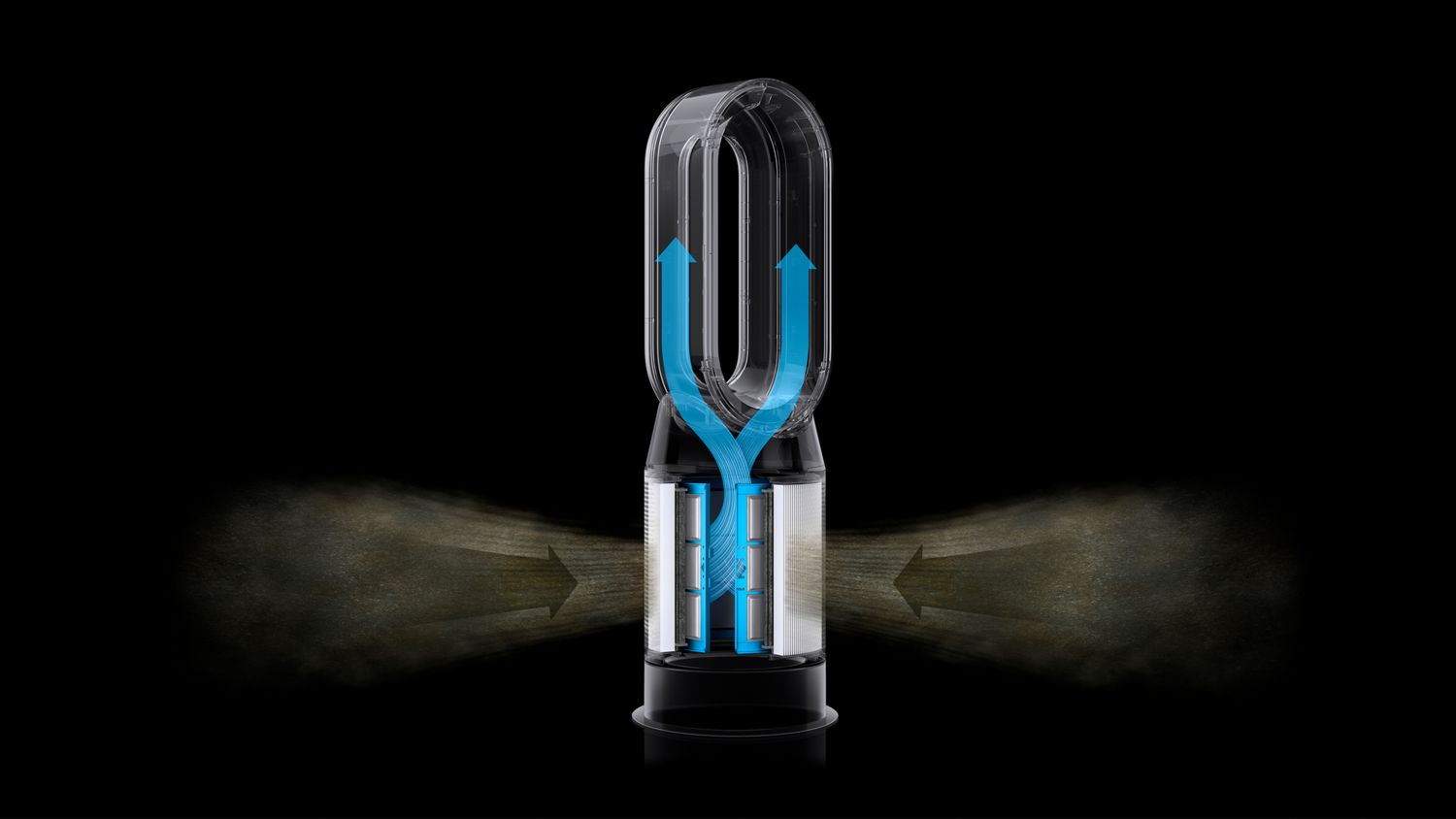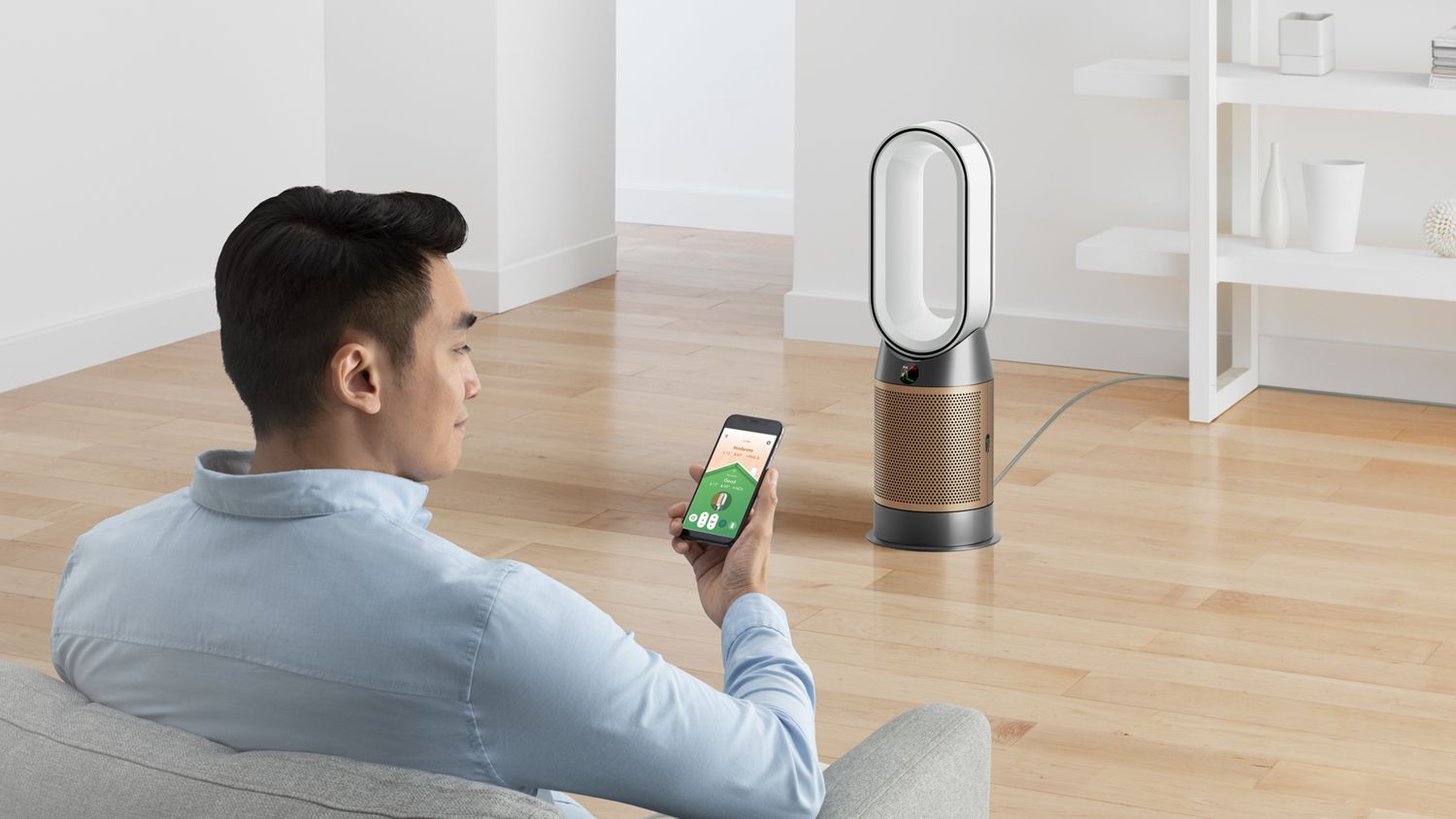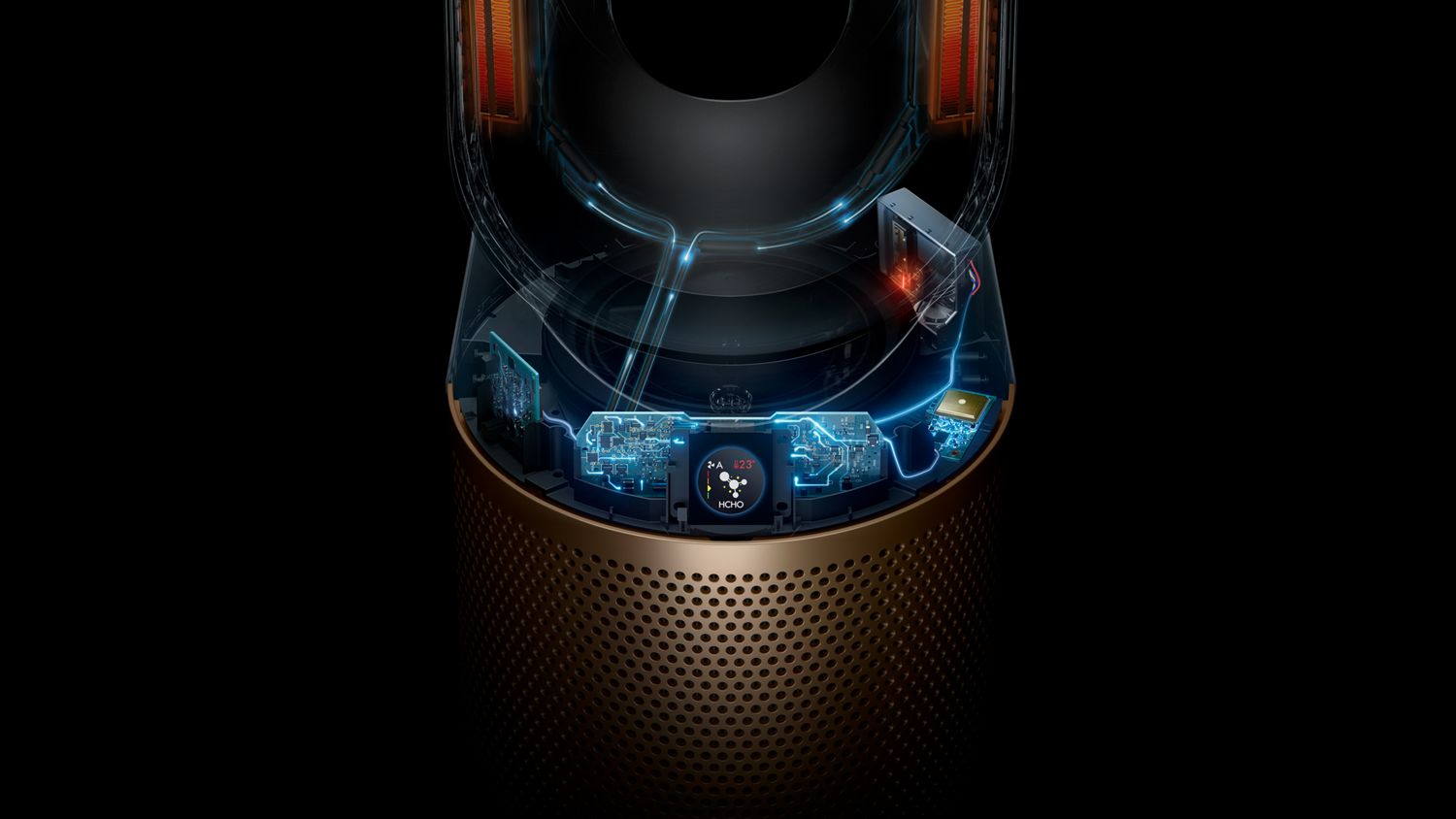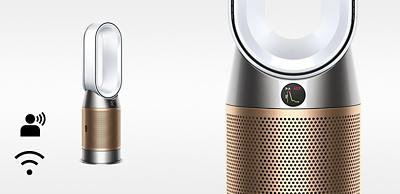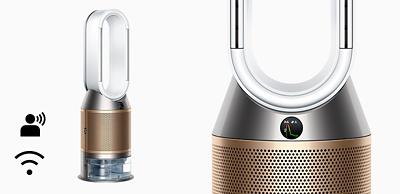Our latest purifier detects and destroys formaldehyde, continuously
It combines a precise solid-state formaldehyde sensor with a unique catalytic filter that continuously destroys formaldehyde. HEPA H13 and activated carbon filters also capture dust, allergens, gases³ and other ultrafine pollutants. And Dyson purifiers have powerful Air Multiplier™ technology to purify the whole room.⁴
Specifications
-
Weight
5.5 kg
-
Airflow at max. setting
290 l/s
-
Oscillation/Angle
350 degrees
-
Cord length
1.8 m
-
Number of speed settings
10
-
Total height
764 mm
-
Voltage
240 Voltage
-
HEPA filter
Glass fiber HEPA filter medium
-
Sound level
62 Decibel
-
Product diameter (skirt)
220 mm
-
Product diameter (shrouds)
204 mm
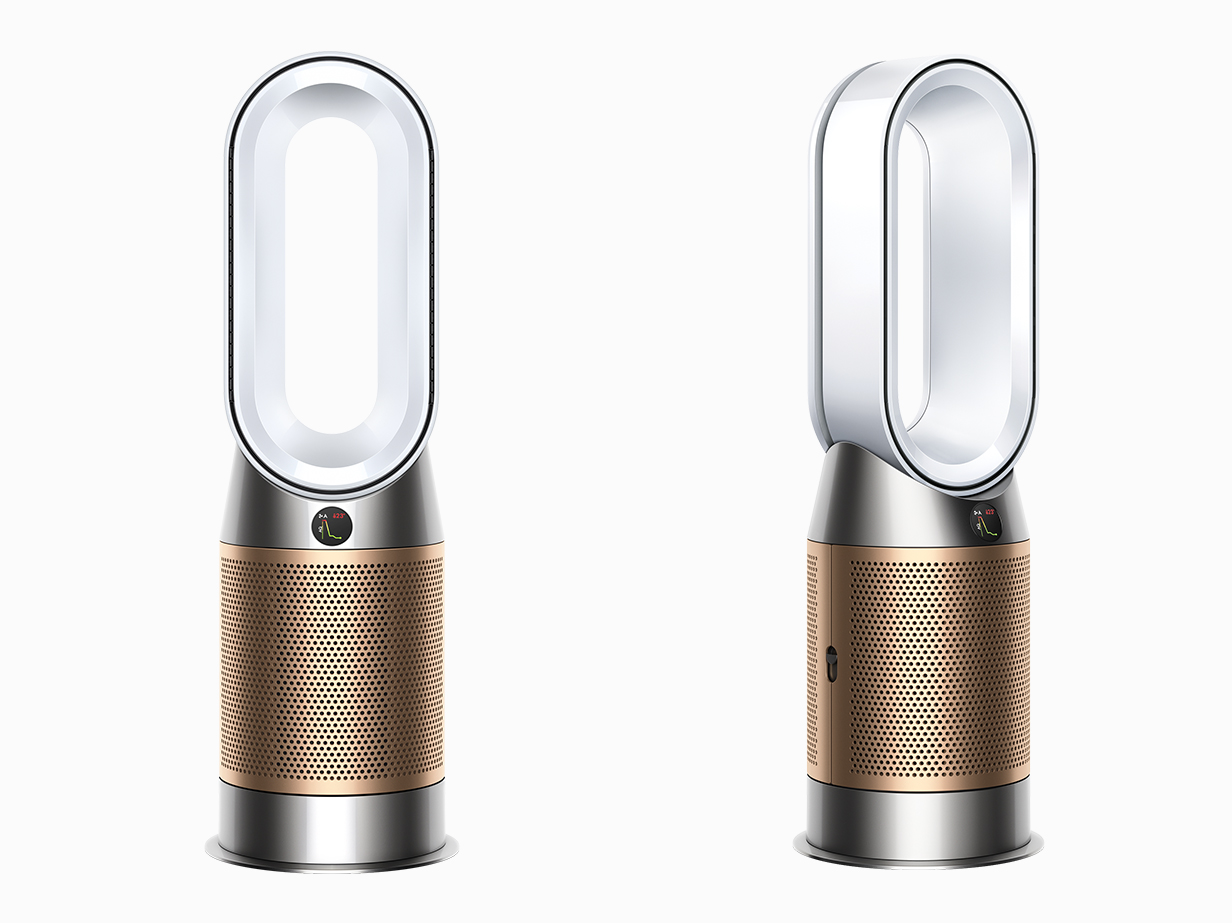
-
Height
764 mm
-
Length
20 cm
-
Width
24.8 cm
*Dyson purifiers were challenged with airborne influenza A (H1N1 virus) and MS2 bacteriophage at an independent lab, using a 30 m3 chamber. After 60 minutes at maximum fan speed, the airbone concentration in the chamber was reduced up to 99.9%. Real-life may vary.
*Dyson purifiers were challenged with airborne SARS-CoV-2 (the virus that causes COVID-19) at an independent lab, using a 0.37 m3 chamber for 90 seconds. Dyson purifiers were also challenged with Phi-6 bacteriophage at an independent lab, using a 30 m3 chamber. After 90 minutes at maximum fan speed, the airbone concentration in the chamber was reduced up to 99.9%. Real-life may vary.
- 1 Third party full machine testing based on GB/T 18801-2015 formaldehyde cumulative clean mass testing with continuous injection until plateau of formaldehyde CADR is achieved. Results may vary in practice.
In the box

Dyson Purifier Hot+Cool™ HP09 Formaldehyde Purifying fan heater (White/Gold)
-
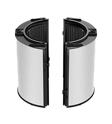
360° Glass HEPA and Activated Carbon Filter
-
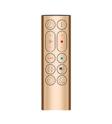
Remote control
Reviews powered by Bazaarvoice
Dyson Purifier Hot+Cool™ HP09 Formaldehyde Purifying fan heater (White/Gold)
Overall rating
Heats in winter
With long-range projection, it’s quick to heat the whole room evenly.⁴
Cools you in summer
In warmer weather, a powerful stream of purified airflow can cool you down.
Diffused mode
Diverts airflow through the back of the machine. To purify, without cooling you.
App control
Control and monitor your air quality from anywhere using the MyDyson™ app.⁵
Heats in winter
With long-range projection, it’s quick to heat the whole room evenly.⁴
Oscillates up to 350 ̊
Adjustable oscillation projects purified air around the whole room.
Easy filter care
The filter is quick and easy to change. With automatic filter-life notifications on the LCD or MyDyson™ app.⁶
Voice control
Control it hands-free with compatible voice services.⁷
Remote
Curved and magnetised to store neatly on top of the machine.
Technology
-
Senses and reports, automatically
Integrated sensors constantly analyse your air, while our unique algorithm cross-checks data every second. It diagnoses pollutants at a molecular level, displaying live results on the LCD.
-
Captures gases and ultrafine particles
The HEPA H13 filter captures 99.95% of particles as small as 0.1 microns.² A layer of activated carbon also removes odours and gases including VOCs.³
-
Destroys formaldehyde, continuously
The Dyson catalytic filter continuously traps and breaks down formaldehyde¹ molecules into water and CO₂. And it never needs replacing.
-
Purifies the whole room
Only Dyson purifiers have Air Multiplier™ technology. It generates the circulation power to draw even distant pollutants into the machine, projecting purified air throughout the room.⁴
Heating your whole home can be unnecessary
Dyson heater purifiers provide long range and whole room even heating solutions in winter, so you don't have to heat your whole home. Dyson heater purifiers have an intelligent thermostat, so it stops heating once the correct temperature is reached and energy is not wasted.
-
Fully sealed to HEPA H13
In our latest purifiers, it's not just the filter that meets HEPA H13 standard, it's the whole machine.⁵ So what goes inside, stays inside.
-
Precisely detects formaldehyde
Our latest purifiers use a solid-state sensor to detect formaldehyde molecules – 500 times smaller than 0.1 microns. Maintains precision for the lifetime of the machine.
Glossary
-
Allergens
An allergen is a substance that can cause an allergic reaction by triggering the body’s immune system. Common indoor allergens include dust mite droppings, pet dander, mould and pollen.
-
Aspergillus mould
A common name for a visible group of fungi, mould thrives wherever there is dampness – sending out millions of spores into the air. Exposure to mould occurs via inhalation, skin contact or ingestion.
-
Bacteria
Microscopic, single-celled organisms that exist in their millions, in every environment. Not all bacteria are harmful, but some can have adverse effects, such as E. coli.
-
Benzene
Benzene is colourless, flammable liquid produced by both natural and man-made processes. It’s a natural part of crude oil, gasoline, and cigarette smoke. Indoors, it comes from products such as glues, paints, furniture wax, and detergents.
-
Carbon dioxide (CO₂)
A colourless greenhouse gas, which comes from the extraction and burning of fossil fuels. Increased CO₂ levels can impact cognitive function.
-
Dust mites
House dust mites are tiny insects that commonly live in household dust. They are one of the biggest causes of allergies. Each gram of house dust contains approximately 1000 dust mites.
-
Formaldehyde (HCHO)
Formaldehyde is often associated with the familiar smell of fresh paint, or the unboxing of new furniture. It's a colourless, flammable and potentially harmful gas used in some building materials and household products. Sources can include fabrics found in flooring and furniture, glues, paints, varnishes, air fresheners, and household cleaners.
-
H1N1 virus
This subtype of Influenza A virus, also known as swine flu, caused a global flu outbreak. H1N1 produces respiratory infectious diseases in humans and pigs. Symptoms can be similar to seasonal flu.
-
HEPA
HEPA (High Efficiency Particulate Air) is an air filter efficiency standard and a measure of a filter’s performance. For an air filter to be classified as HEPA, it must be capable of removing at least 99.95% (ISO, European Standard) or 99.97% (ASME, U.S. DOE) of particles whose diameter is equal to 0.3 microns.
-
HEPA 13
HEPA H13 is an even higher tier of HEPA air filtration efficiency. To meet HEPA H13 standards, a filter must be able to remove 99.95% (ISO, European Standard) or 99.97% (ASME, U.S. DOE) of microscopic particles at the most penetrating particle size of 0.1 microns.
-
Humidification
A process of increasing air moisture content through the addition of water vapour or steam. Humidifiers can add moisture to the air in dry conditions, creating a more comfortable indoor environment.
-
Micron
Airborne particles are usually described in microns. One micron is equal to one-thousandth of a mm. The human eye struggles to see anything smaller than 25 microns in size. Allergens are microscopic. The size of dust mite allergens, mould spores and other insect allergens is often between 0.5 to 5 microns. To provide context, the diameter of a human hair is around 50 microns.
-
Nitrogen dioxide (NO₂)
Nitrogen dioxide is a liquid below 21.2 °C and a gas at higher temperatures. It is toxic to humans in both states. Gas stoves and space heaters are the most common indoor sources of NO₂ emissions. Other sources include improperly vented furnaces and water heaters.
-
Pet dander
Pet dander is made up of tiny particles of skin, saliva and urine, shed by animals with fur or feathers. Pet dander lingers in the air before settling on surfaces such as furniture, bedding, and fabrics. Exposure to these airborne particles can trigger allergies.
-
Particulate matter (PM)
PM stands for particulate matter, which consists of microscopic solid or liquid particles and pollutants. PM is often followed by a number, which represents the size of the particulate matter in microns (a micron is one-thousandth of a mm). For example, PM01 means particulate matter that is 0.1 of a micron in size. PM2.5 equals particles that are 2.5 microns in size, and PM10 means particles up to 10 microns in size. Indoor PM can be generated through many day-to-day activities, including cooking, cleaning and the burning of candles and fires.
-
Pollen
Pollen is a powdery substance released from seed plants as part of their reproduction process. It typically appears from trees in the spring, grasses in the summer, and weeds in the autumn. Pollen grains are among the most common allergens.
-
Purification
The process of making something free of any contaminants or physical impurities. Air purification is designed to filter the air in your home – removing pollutants such as dust, allergens and viruses.
-
Selective Catalytic Oxidisation (SCO)
SCO is an abbreviation for Dyson's Selective Catalytic Oxidisation filter, a specific type of filter engineered to capture and destroy formaldehyde at the molecular level. Dyson SCO filters break the pollutant down into tiny amounts of water and CO₂. Our filter then naturally regenerates from the oxygen in the air, so it can keep destroying formaldehyde continuously, without ever needing to be replaced.
-
Volatile organic compounds (VOCs)
Volatile organic compounds are potentially harmful gases found in many household products. Common sources include paints, varnishes, air fresheners, cosmetics, and cleaning products.



